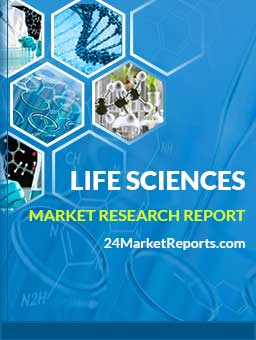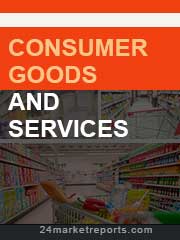
Download FREE Report Sample
Download Free sampleMARKET INSIGHTS
Global Breath Analyser market size was valued at USD 5.35 billion in 2024. The market is projected to grow from USD 6.21 billion in 2025 to USD 16.16 billion by 2032, exhibiting a CAGR of 17.5% during the forecast period. This remarkable growth trajectory reflects increasing global demand for respiratory monitoring technologies across healthcare and law enforcement sectors.
Breath analysers are diagnostic devices designed to measure alcohol content or detect specific biomarkers in exhaled air. These instruments utilize various technologies including fuel cell sensors, semiconductor oxide sensors, and infrared spectroscopy. The market offers multiple form factors such as desktop units for clinical settings, portable devices for field use, and handheld solutions for personal monitoring.
The market expansion is driven by stringent drunk-driving regulations worldwide, growing adoption in workplace testing programs, and increasing applications in medical diagnostics. North America currently dominates market share (38% in 2024), while Asia-Pacific shows the fastest growth potential with a projected 21.3% CAGR through 2032. Key players like Drager and Abbott continue to innovate with smartphone-connected devices, enhancing accessibility and data tracking capabilities.
Stringent Drunk Driving Regulations and Workplace Safety Mandates Accelerate Market Adoption
Global breath analyzer demand is surging due to increasingly strict regulations against drunk driving and workplace intoxication testing. Over 100 countries have implemented per se laws establishing legal blood alcohol concentration (BAC) limits, typically between 0.05% to 0.08%. Law enforcement agencies worldwide are scaling up roadside testing programs, with some European nations conducting over 10 million annual breath tests. The workplace safety segment shows similar growth, as industries like transportation, manufacturing, and energy mandate pre-employment and random alcohol testing to mitigate liability risks. These regulatory pressures create sustained demand for accurate, efficient breath testing solutions across both public and private sectors.
Technological Advancements Enhance Accuracy and User Adoption
To know more about market statistics, Download a FREE Sample copy
Next-generation breath analyzers are overcoming historical accuracy limitations through fuel cell sensor technology and IoT integration. Modern devices achieve precision levels comparable to blood tests, with error margins below 0.005% BAC. Recent product launches incorporate AI-powered calibration systems that automatically adjust for environmental factors like temperature and humidity - a critical advancement given that approximately 15% of traditional breath test inaccuracies stem from ambient conditions. Bluetooth-enabled devices now seamlessly integrate with mobile apps and centralized monitoring systems, enabling real-time data transmission to authorities or employers. These technological improvements are driving replacement cycles as users upgrade older semiconductor-based models to superior fuel cell alternatives.
➤ A 2024 industry analysis revealed that fuel cell technology now dominates 68% of the professional breath analyzer market, up from just 42% in 2020.
Expanding Applications in Healthcare Create New Growth Vectors
Beyond alcohol detection, breath analysis is gaining traction in clinical diagnostics through volatile organic compound (VOC) profiling. Research indicates breath biomarkers can detect conditions like diabetes, cancer, and respiratory diseases with over 90% specificity. FDA-cleared medical breath analyzers now screen for conditions including H. pylori infections and lactose intolerance. The global point-of-care diagnostics market expansion, projected to grow at 8.7% CAGR through 2030, presents significant crossover opportunities. This diversification reduces cyclical dependence on law enforcement purchases and creates stable demand from healthcare providers seeking non-invasive diagnostic tools.
Legal Challenges and Privacy Concerns Limit Testing Expansion
The breath analyzer market faces growing resistance from privacy advocates and civil liberties groups. Over 25% of legal challenges to drunk driving convictions now contest breath test reliability, with courts increasingly scrutinizing calibration records and operator training protocols. Workplace testing programs encounter similar pushback, particularly in European markets with strong data protection laws. The GDPR requirement for proportionality assessments has forced some employers to demonstrate specific safety justifications for random alcohol testing. These legal and cultural barriers create adoption friction, especially in regions without established testing cultures.
Cost Sensitivity Constrains Emerging Market Penetration
High-quality breath analyzers remain cost-prohibitive for many developing economies, where price points above $300 create significant adoption barriers. While basic semiconductor models are available below $50, their high error rates (up to ±0.02% BAC) make them unsuitable for evidentiary purposes. This cost-quality tradeoff particularly impacts law enforcement agencies in Africa and Southeast Asia, where budget constraints limit procurement to 1-2 devices per precinct. Without subsidies or financing programs, the market risks bifurcation between premium devices in developed markets and unreliable alternatives in price-sensitive regions.
Additional Challenges
Training Requirements
Proper breath analyzer operation requires rigorous training in calibration protocols and evidentiary procedures. A single improperly administered test can invalidate prosecution cases, as seen in several high-profile legal challenges. The shortage of certified trainers creates bottlenecks for police departments scaling their testing programs, with some agencies reporting 6-12 month waiting periods for operator certification courses.
Cross-Sensitivity Issues
Common substances like acetone (from ketogenic diets) or methanol can trigger false positives in non-medical grade devices. This remains a persistent challenge despite technological improvements, particularly for workplace testing scenarios where employees may have legitimate medical conditions affecting test results.
Smart City Integration Opens New Deployment Channels
The global smart city technology market, projected to exceed $1 trillion by 2030, presents transformative opportunities for breath analyzer integration. Pilot programs in Singapore and Barcelona are embedding AI-powered breath sensors into public transit systems and entertainment districts. These systems automatically detect impaired individuals and alert authorities while aggregating anonymized data to identify intoxication hotspots. The data analytics potential extends beyond safety applications, offering municipal planners insights into nightlife patterns and public health trends. As urban digitization accelerates, breath analysis systems are poised to become standard smart city infrastructure components.
Insurance Sector Partnerships Drive Consumer Market Growth
Auto insurers are increasingly offering usage-based insurance (UBI) programs incorporating breath analyzers, with some providing 15-20% premium discounts for policyholders using certified devices. These programs typically require periodic breath tests before vehicle operation, using connected devices to transmit compliance data. The global UBI market's 22% annual growth rate suggests significant expansion potential, particularly among young driver segments where alcohol-related accidents are statistically prevalent. Manufacturer-insurer collaborations are creating turnkey solutions that bundle hardware, software, and actuarial models - a trend expected to accelerate as telematics penetration deepens.
Breath-Based Diagnostics Present Medical Market Breakthrough
The emergence of multi-modal breath analysis platforms capable of detecting both alcohol and disease biomarkers creates compelling healthcare applications. Recent clinical trials demonstrate that certain VOC patterns can identify lung cancer six months earlier than traditional imaging. Pharmaceutical companies are exploring breath analysis for real-time medication adherence monitoring in clinical trials. These medical applications command premium pricing (5-10x traditional alcohol testers) and benefit from recurring revenue models through disposable mouthpieces and calibration services. As regulatory pathways clarify, medical breath analysis could become standard in preventive care and chronic disease management protocols.
Portable Breath Analysers Dominate Due to Their Convenience and Wide Application in Law Enforcement
The market is segmented based on type into:
Desktop
Portable
Handheld
Fuel Cell Technology Leads Owing to Its High Accuracy in Alcohol Detection
The market is segmented based on technology into:
Fuel Cell
Semiconductor Oxide Sensor
Infrared Spectroscopy
Others
Law Enforcement Segment Accounts for Largest Share Due to Stringent Drunk Driving Regulations
The market is segmented based on application into:
Law Enforcement
Healthcare
Industrial
Personal Use
Government Agencies Lead Due to Mandatory Alcohol Testing Programs
The market is segmented based on end user into:
Government Agencies
Hospitals
Rehabilitation Centers
Private Enterprises
Individuals
Technological Advancements and Strategic Collaborations Shape Market Competition
The global breath analyser market features a dynamic competitive environment with multinational corporations dominating market share while emerging players focus on niche applications. Drägerwerk AG & Co. KGaA leads the industry with approximately 18% revenue share in 2024, owing to its extensive product range across law enforcement, workplace testing, and medical applications. The company's recent €150 million investment in next-generation fuel cell technology positions it strongly for future growth.
Abbott Laboratories (Alere Inc.) and Lion Laboratories Limited collectively hold around 25% of the market, capitalizing on their established presence in healthcare and forensic applications. These leaders face intensifying competition from agile players like BACtrack and Andatech, whose smartphone-connected devices are capturing the consumer market with annual growth rates exceeding 30%.
Strategic partnerships represent a key growth strategy, evidenced by Vyaire Medical's 2023 collaboration with three European hospitals to develop specialized respiratory analyzers. Similarly, Intoximeters' acquisition of C4 Development Ltd. in early 2024 strengthened its position in evidentiary testing systems, a segment projected to grow at 12.3% CAGR through 2030.
The Asia-Pacific market sees particularly fierce competition, where local manufacturers like Beijing Donglian Zhitong Technology compete with global brands by offering cost-effective solutions. Meanwhile, established players face pricing pressures in emerging markets while maintaining premium positioning in developed regions through continuous R&D investment.
Drägerwerk AG & Co. KGaA (Germany)
Lion Laboratories Limited (U.K.)
Intoximeters, Inc. (U.S.)
BACtrack (U.S.)
Beijing Donglian Zhitong Technology (China)
Lifeloc Technologies, Inc. (U.S.)
Andatech Private Limited (Australia)
Vyaire Medical (U.S.)
Securetec Detektions-Systeme AG (Germany)
ACS (Italy)
Fluke (U.S.)
The global breath analyser market is experiencing significant growth, primarily driven by technological advancements in sensor technology and artificial intelligence integration. Modern devices now incorporate advanced fuel cell sensors and semiconductor oxide sensors that provide extremely high accuracy, often surpassing traditional methods. Additionally, the integration of AI-powered algorithms enables real-time data interpretation, reducing false positives and improving reliability. These innovations are crucial in applications such as law enforcement and workplace safety, where precision is paramount. The market for breath analysers with smart connectivity features is expected to grow at a CAGR of 17.5%, reaching a projected value of $16.16 billion by 2032. While stationary devices still dominate, handheld and portable variants are gaining traction due to their convenience and rapid deployment capabilities.
Rising Demand for Workplace Safety Compliance
Heightened awareness about workplace safety regulations across industries is accelerating breath analyser adoption. Many countries have implemented strict alcohol testing policies for transportation, manufacturing and construction sectors, directly impacting market growth. Nearly 60% of industrial organizations now mandate pre-employment and random alcohol testing programs, creating sustained demand. The transportation sector alone accounts for over 30% of breath analyser deployments globally. Furthermore, evolving occupational health standards are prompting businesses to invest in advanced testing solutions that integrate with HR management systems for compliance tracking.
Beyond alcohol detection, breath analysers are increasingly used for medical diagnostics, driving market expansion into healthcare. Recent developments in biomarker detection technology allow non-invasive diagnosis of conditions like asthma, diabetes and certain cancers through breath analysis. Hospitals and rehabilitation centers are rapidly adopting these solutions, with the healthcare segment projected to grow at 19% CAGR through 2030. The ability to detect volatile organic compounds (VOCs) associated with specific diseases has opened new revenue streams for manufacturers. Portable medical-grade analysers now represent approximately 25% of total device sales, with adoption rates highest in developed healthcare markets.
North America
The North American breath analyser market is driven by strict alcohol monitoring regulations and widespread workplace testing policies. The U.S. dominates with its zero-tolerance DUI laws and advanced healthcare infrastructure, where breath analysers are increasingly used for both legal enforcement and medical diagnostics. Technological advancements, particularly in fuel cell sensor-based devices, are gaining traction for their higher accuracy. However, price sensitivity in certain sectors limits rapid adoption of premium models. Recent government initiatives targeting drunk driving prevention are expected to further propel market growth.
Europe
Europe maintains a robust market presence with harmonized alcohol testing standards across most EU nations. Germany and the UK lead in adoption due to stringent workplace safety laws and advanced healthcare systems. The region shows particular interest in connected breath analysers that integrate with digital monitoring platforms. While developed Western European markets are nearing saturation, Eastern European countries present growth opportunities as they align with EU regulatory frameworks. The medical sector's use of breath analysis for disease detection is emerging as a new growth vertical beyond traditional alcohol testing applications.
Asia-Pacific
This rapidly expanding region is characterized by divergent adoption patterns. Developed markets like Japan and South Korea emphasize high-tech solutions for law enforcement and corporate use, while developing nations prioritize cost-effective options. China's massive transportation sector drives bulk purchases, though quality inconsistencies persist in lower-tier markets. India shows promise with increasing road safety awareness but faces challenges in enforcement consistency. The region's healthcare sector is beginning to explore medical breath analysis, particularly for metabolic disorder screening, creating new market avenues beyond alcohol detection.
South America
Market growth in South America is uneven but accelerating, with Brazil and Argentina as primary adopters. While alcohol testing regulations exist, inconsistent enforcement and economic volatility constrain market potential. The corporate sector shows increasing adoption for workplace safety, particularly in mining and transportation industries. Price sensitivity remains a key purchasing factor, favoring local manufacturers offering basic models. Emerging middle-class awareness about road safety and workplace sobriety testing indicates long-term growth potential as regulatory frameworks mature.
Middle East & Africa
This emerging market demonstrates gradual modernization in breath alcohol testing. Gulf Cooperation Council countries lead adoption through strict DUI laws and workplace regulations tied to large expatriate workforces. The UAE's tourism-driven economy maintains particularly high testing standards. Sub-Saharan Africa shows limited but growing adoption, primarily in mining and transportation sectors. While religious factors constrain alcohol testing in some markets, increasing road safety initiatives and healthcare modernization provide alternative growth pathways for medical breath analysis applications.
This market research report offers a holistic overview of global and regional markets for the forecast period 2025–2032. It presents accurate and actionable insights based on a blend of primary and secondary research.
✅ Market Overview
Global and regional market size (historical & forecast)
Growth trends and value/volume projections
✅ Segmentation Analysis
By product type or category
By application or usage area
By end-user industry
By distribution channel (if applicable)
✅ Regional Insights
North America, Europe, Asia-Pacific, Latin America, Middle East & Africa
Country-level data for key markets
✅ Competitive Landscape
Company profiles and market share analysis
Key strategies: M&A, partnerships, expansions
Product portfolio and pricing strategies
✅ Technology & Innovation
Emerging technologies and R&D trends
Automation, digitalization, sustainability initiatives
Impact of AI, IoT, or other disruptors (where applicable)
✅ Market Dynamics
Key drivers supporting market growth
Restraints and potential risk factors
Supply chain trends and challenges
✅ Opportunities & Recommendations
High-growth segments
Investment hotspots
Strategic suggestions for stakeholders
✅ Stakeholder Insights
Target audience includes manufacturers, suppliers, distributors, investors, regulators, and policymakers
-> Key players include Drager, Alere Inc. (Abbott), Intoximeters Inc., BACtrack, Lifeloc Technologies, Lion Laboratories, Andatech Private Limited, and Vyaire Medical, among others.
-> Key growth drivers include stringent drunk-driving laws, rising healthcare expenditure, technological advancements in breath analysis, and increasing adoption in workplace safety programs.
-> North America currently dominates the market, while Asia-Pacific is expected to witness the fastest growth during the forecast period.
-> Emerging trends include development of smartphone-connected breathalyzers, AI-powered analysis, and increasing use in medical diagnostics beyond alcohol detection.

Speak to our Custom Research Team and get the Custom Research in a budget
Custom ResearchFrequently Asked Questions ?
A license granted to one user. Rules or conditions might be applied for e.g. the use of electric files (PDFs) or printings, depending on product.
A license granted to multiple users.
A license granted to a single business site/establishment.
A license granted to all employees within organisation access to the product.
Upto Working 24 to 48 hrs
Upto 72 hrs max - Weekends and Public Holidays
Online Payments with PayPal and CCavenue
Wire Transfer/Bank Transfer
Hard Copy




 Industry Market Size
Industry Market Size SWOT Analysis
SWOT Analysis Industry Major Players
Industry Major Players Revenue Forecasts
Revenue Forecasts Historical and Forecast Growth
Historical and Forecast Growth Profitability Analysis
Profitability Analysis
























